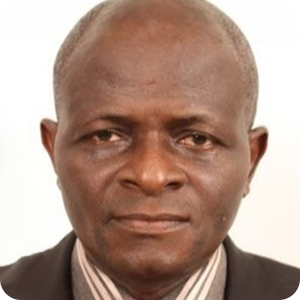Despite significant aid disbursements for education, the sector has apparently not fully recovered from the negative effects of the COVID-19 pandemic. The latest OECD-run survey – the PISA study – has revealed significant results, one being the ‘unprecedented drop’ in maths and reading performance. The closure of educational institutions and the transition to online or hybrid learning have had a negative impact on academic performance. The report also showed a widening gap between high-performing and low-performing countries. In this context, there is an urgent need for education systems to adapt and transform in order to prepare students for the future. Let’s look at these results through the lens of international education experts.
Key Takeaways:
- PISA is an internationally standardized assessment with the aim of measuring the abilities of 15-year-old students in reading, mathematics, and science and the skills to meet real-life challenges.
- According to the results, Asian countries are at the top of the list with Singapore, Macau, Taiwan, Japan, and South Korea holding the top five positions.
- The OECD education survey reveals a significant decline in student performance, attributed in part to the disruptive effects of the COVID-19 pandemic on educational norms, including the transition to remote learning.
- To address the situation and improve educational outcomes, there is a need to focus on enhancing teacher support, promoting creativity and critical thinking in classrooms, and integrating technology into the learning process.
DevelopmentAid: Why does the OECD education survey show an ‘unprecedented’ drop in student performance and what are some potential solutions to address the situation?

“The recent OECD education survey unveiled a significant downturn in student performance which is multifaceted in nature. The COVID-19 pandemic notably disrupted educational norms, transitioning students to remote learning and destructively impacting educational standards, the report says. Moreover, the longitudinal analysis reveals persistent issues within education systems in countries like Finland, Iceland, and Sweden, signaling enduring educational challenges that predate the pandemic. These systemic issues are critical to understanding the broader context of declining student performance. Equally important is the role of educational support mechanisms. OECD education analyst, Irene Hu, highlighted deficiencies in resource allocation for student support, and Eric Charbonnier emphasized the suboptimal investment in teaching quality across some countries. Additionally, the survey points to a reduction in parental involvement since 2018, further complicating the landscape of student support and engagement. In summary, the confluence of the COVID-19 pandemic’s immediate impacts ingrained systemic issues, and waning support from teachers, school staff, and parents formulates a comprehensive explanation for the observed decline in student performance. Addressing these interconnected factors is imperative for improving educational outcomes. Addressing the decline in student performance highlighted by the OECD demands a focus on enhancing teacher support to promote creativity and creative thinking in classrooms. An essential strategy is investing in teacher training programs that prioritize creative thinking and problem-solving skills, as suggested by the National Education Association. These programs enable teachers to develop such skills among students effectively. Moreover, fostering a collaborative environment through group discussions and interdisciplinary lessons encourages students to leverage their collective creativity and apply it across various contexts, as noted by Innovation for Social Change. Integrating technology into the learning process is crucial, as well as providing innovative tools that support creative problem-solving. Creating an educational atmosphere that values creativity as an integral part of learning and encourages exploration, imagination, and critical thinking is vital. By empowering teachers with the tools and environment to nurture creativity, we can make significant strides in reversing the downward trend in student performance reported by the OECD.”

“The OECD education survey indicates an ‘unprecedented’ drop in student performance due to a combination of factors. The COVID-19 pandemic has had a significant impact, but the decline in performance, especially in mathematics, was already evident before the pandemic. This gap is a result of various systemic issues, some of which are listed below:
- Resource Disparity: High-performing countries often have more resources to invest in education, leading to better outcomes for their students. In contrast, low-performing countries lack the necessary funding, infrastructure, and educational materials which hinders student performance.
- Educational Practices: Effective teaching methods and curricula that foster critical thinking and problem-solving are more prevalent in high-performing countries. Conversely, less-advantaged regions have not updated their teaching practices to meet modern educational standards.
- Socio-Economic Factors: Students in low-performing countries often face challenges outside of school, such as poverty and instability, which negatively impact their academic performance.
- Access to Technology: The digital divide means that students in wealthier nations have better access to technology which can enhance learning while those in poorer regions do not. Equal access to resources is crucial here.
To address the decline in student performance, several strategies could be implemented:
- Global Educational Partnerships: Establish partnerships between high-performing and low-performing countries to share resources and best practices.
- Investment in Education: Increase funding for education in less-advantaged regions to improve infrastructure and access to learning materials.
- Invest in Teacher Training: Provide comprehensive training programs for teachers in low-performing countries to update teaching methods and curricula.
- Support Outside the Classroom: Implement social programs to address the socio-economic challenges that affect students’ ability to learn.
- Technology Access: Work towards closing the digital divide by ensuring that all students have access to the internet and computers.
- Strengthen Support Systems: Implement support systems within schools to help students who are struggling, including tutoring and counseling services.
- Promote Parental Engagement: Develop programs to increase parental involvement in their children’s education.
- Update Educational Content: Revise curricula to include relevant and engaging material that connects with real-world applications.
- Foster Inclusive Education: Ensure that all students, regardless of background, have access to quality education and opportunities to succeed.”

“The “unprecedented” drop in pupil performance is due, among other things, to the COVID-19 pandemic and the lockdowns it provoked, to the noise and disorder of learners in lessons, to inadequate support in teacher training and to the reforms that teachers are subject to which are sometimes unfortunate The proposed solutions to remedy this situation are as follows: (i) in the training reference frameworks, develop assessment programmes to evaluate the learning frameworks used to develop non-cognitive skills; (ii) in practice, know how to help learners to progress because they will be assessed and therefore design measurement tools to assess their individual resource skills (attention, concentration, motivation) and social and civic skills (dialogue, cooperation, taking the initiative, problem-solving, mediation, sense of ethics); (iii) building and sharing innovative teaching practices; (iv) promoting access to in-service teacher training; and (v) taking action to reduce aggression and threats.”

“The dismissal of students’ observations of what’s important and their subsequent inculcation process of what matters accounts for the difference between the results of the less advantaged and the top performers. It is better that education is tethered to proximal needs (health/financial/labor literacy) which leads to opportunities for locals’ aspirational attainment such as whether to stay or go, this profession or that job. Such an approach engorges academic programs whose ill-fitted geographic contours squander personal productivity as high-scoring outliers idle while lower performers endure imposed stresses and race to meet the mean.”
See also: How can today’s students be prepared for jobs that don’t yet exist? | Experts’ Opinions
Education is one of the sectors with the highest number of job openings and opportunities in the international development sector. On the DevelopmentAid Platform, out of 6,500 openings, more than 150 are in the education sector. To build a career in the education sector, you can apply directly to one of these openings, write directly to over 29,000 in the education field, access tenders or grants for individuals in this field, and much more. All these opportunities are available for Individual Professional Members.

